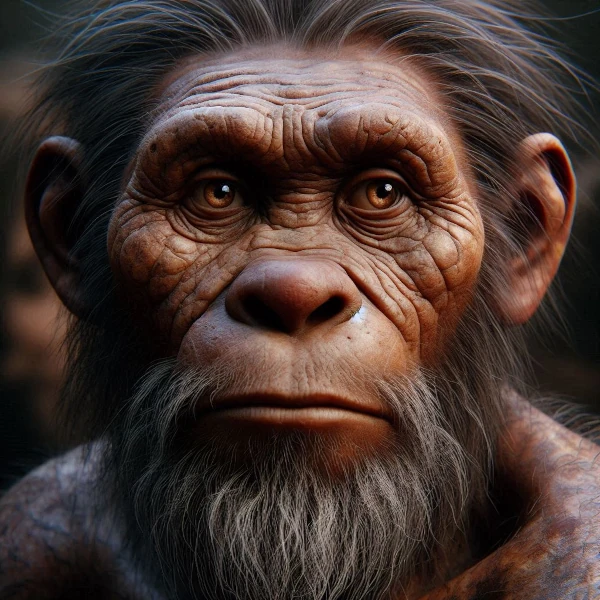Last updated: December 11, 2024
A narrowly avoided extinction: the story of the Homo genus 900,000 years ago
Image description: Artistic representation of a Homo erectus, one of the species of the genus Homo that nearly went extinct around 900,000 years ago. Image source: astronoo.com
The Critical Period
Around 900,000 years ago, the genus Homo went through a critical period where it nearly went extinct, dropping from an estimated population of 100,000 individuals to only 1,000 to 1,500 individuals. This drastic 98% population decline occurred between 930,000 and 813,000 years ago and lasted nearly 120,000 years.
The genus Homo, which includes several species such as Homo Habilis, Homo Erectus, and later Homo Sapiens, emerged in Africa around 2.8 million years ago. These early human species, over very long periods, had to face extremely varied and often hostile environmental conditions. Before them, several species of Australopithecus lived between 4 and 3 million years ago in East Africa, including the famous "Lucy".
Historical Periods of the Genus Homo
The evolution of the genus Homo was not linear but rather bushy, with several species coexisting at different times. This complexity underscores the dynamic and interconnected nature of evolution.
Homo habilis:
- Appearance: around 2.4 million years ago.
- Extinction: around 1.44 million years ago.
Homo Erectus:
- Appearance: around 1.8 million years ago.
- Extinction: around 100,000 years ago.
Homo Sapiens:
- Appearance: around 300,000 years ago.
- The oldest known Homo sapiens fossils to date were discovered at the Jebel Irhoud site, located about 100 km west of Marrakech in Morocco. These fossils have been dated to around 300,000 years, pushing back the origin of our species by 100,000 years compared to previous estimates.
Factors Contributing to Near-Extinction
Several factors contributed to the near-extinction of the genus Homo 900,000 years ago:
- Climatic Changes: Climatic fluctuations, particularly periods of glaciation and warming, had a significant impact on available resources. Prolonged periods of drought and temperature variations made survival more difficult.
- Competition with Other Species: Competition for resources with other animal species, including large predators, also played a crucial role. Early humans had to compete for food and water, limiting their ability to thrive.
- Diseases and Epidemics: Diseases and epidemics likely decimated some human populations. Precarious living conditions and the lack of medical care exacerbated the effects of diseases.
- Natural Disasters: Volcanic eruptions, earthquakes, and other natural disasters could have devastated entire habitats, forcing populations to migrate or adapt quickly.
Adaptations and Survival
Despite these challenges, the genus Homo managed to survive thanks to several key adaptations:
- Use of Tools: The use of stone and wooden tools allowed early humans to hunt more effectively and process food, improving their diet.
- Social Cooperation: Cooperation within human groups was essential for survival. Sharing resources, mutual protection, and knowledge transmission strengthened community resilience.
- Migration: The ability to migrate to more favorable environments allowed human populations to find new sources of food and water, escaping unfavorable conditions.
- Use of Fire: Evidence of sporadic fire use dates back to around 1.5 million years ago in South Africa, but this was likely opportunistic use of natural fires. More convincing evidence of fire control appears around 800,000 years ago at the Gesher Benot Ya'aqov site in Israel.
Evolutionary Consequences of Near-Extinction
This period of near-extinction left indelible marks on our genome. Genetic diversity decreased by 65.85%. The surviving populations likely developed adaptive traits that enhanced their resilience to future environmental challenges. These adaptations laid the groundwork for the subsequent evolution of the genus Homo, ultimately leading to the emergence of Homo sapiens.
This extreme situation may have had unexpected consequences on human evolution:
- Acceleration of Brain Evolution: Intense selective pressure could have favored the development of the human brain.
- Emergence of New Species: This period coincides with a "gap" in the fossil record, followed by the appearance of a common ancestor to modern humans, Homo Sapiens, and Neanderthals.
- Migrations: Hostile climatic conditions in Africa may have pushed some groups to migrate to Eurasia, contributing to their survival.
